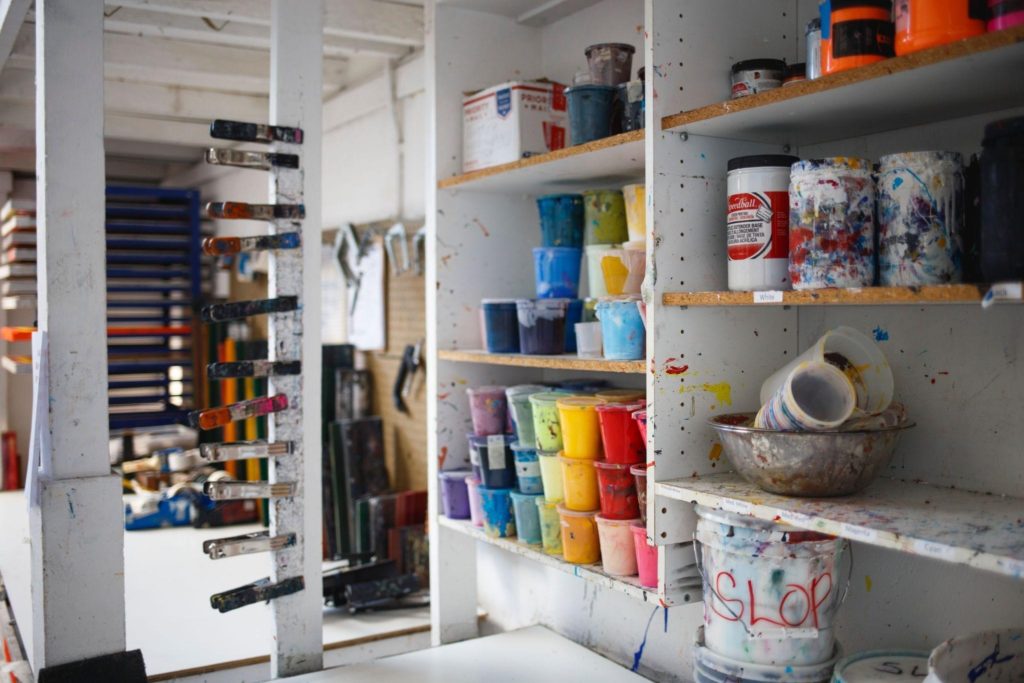
Photo by Katya Austin on Unsplash
Even the most resourceful DIYer can end up with excess materials when they have finished their project.
With the rising cost of building materials, it would be smart to keep these leftovers to utilize in future DIY projects.
Here are some effective ways of storing common DIY and home improvement materials to maximize their usable lifespan.
Lumber
The main objective when storing lumber is to keep it as dry as possible because it can bend and warp when exposed to moisture.
It is possible to fix bent and warped wood, but the process involves equipment that only professional builders would usually have.
Your best bet, then, is storing excess wood properly so you can use them again in future projects.
There are three ways of storing extra wood:
- Stacking is the most common method of storing wood. One thing to always remember when stacking is to allow enough space for air to flow between the wooden beams in the pile. You can do this by:
- Setting smaller pieces of wood between each layer.
- Raising the pile off the ground. This will maintain the airflow and protect the pile from ground moisture.
- Using seasoned wood as the base of your pile (leaving gaps in between each piece of seasoned wood).
You also need to cover the top of the pile with a tarp to protect it from the elements, then top it off with bricks to even out the pressure on the wood below.
Laying bricks on top will also spread any moisture that could’ve gotten into the wood across its whole body, keeping a certain part from warping.
- Storing your wood upright is best for indoor storage where there is limited space. It is crucial to keep wooden beams straight upright to prevent them from bending.
- Keeping your excess wood on wall-mounted racks is another great way for indoor storage. This will stop any ground moisture from coming into contact with the wood.
Cement
Cement requires more careful storage lumber. It becomes unusable once exposed to moisture.
It is therefore important to always store cement indoors in a cool, dry area. Even fluctuations in temperature can cause cement to degrade so attic or basement storage may not always be the most suitable solution.
Cement has a relatively short shelf life, even when in a sealed bag. You usually cannot store it for over six months without it degrading at least to an extent.
Roof Shingles
Asphalt roof shingles must be kept in a cool and dry place.
The optimal temperature for storing roof shingles is between 40 degrees Fahrenheit and 110 degrees Fahrenheit. Too much heat can cause it to deform and too much cold can make it brittle that may result in cracking and breaking.
It is worth considering keeping them in a climate-controlled room because of their temperature requirement.
Bricks
Bricks can crack and crumble if they are left to sit in water for a long period of time.
Keep them indoors or in a shed, on an elevated surface, and cover them with a tarp to prevent any contact with water.
Don’t pile bricks more than five layers high. They can break if falling from this height.
Glue
Keeping glue in the fridge is the best way to store it. You can transfer them into smaller containers, then pop them in your fridge.
Refrigerators have the perfect temperature to prevent glues from drying out or freezing.
Paints and Primers
The main causes for paints and primers drying out are heat and air.
You, therefore, need to store them in a room with a temperature between 50 and 75 degrees Fahrenheit and with their lids tightly closed.
Other steps that you can take to keep paints and primers from drying are the following:
- Moving a small amount of paint from its original bucket to a smaller container. A small container means less space for air.
- Placing a thin plastic on top of the rim before closing the lid. This will prevent the air from entering and will also act as a protective barrier from rust in case the lid becomes tarnished.
- Refraining from hammering the lid. Clobbering the lid can create a dent on both the lid and the rim where air can pass through.
- Storing the container upside down. The paint or the primer inside will create an air-tight seal preventing air from entering. Just make sure that the lid is tightly closed.
Conclusion
Different types of home improvement materials require different ways of storage, with some demanding more complex methods than others to keep them in a usable condition for as long as possible.
Sometimes, however, building materials cannot feasibly be reused and need to be thrown away.
Rather than hauling them yourself, it is better to ask for help from a junk removal company like 1-844-Junk-Rat to get rid of these materials.
For all your junk removal needs, you can reach us here.

